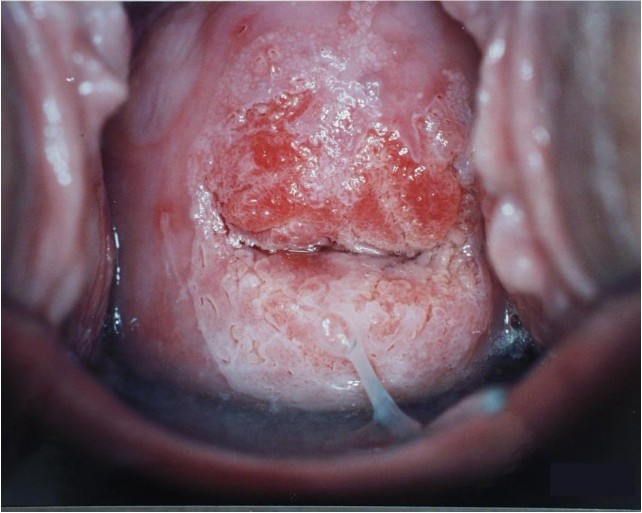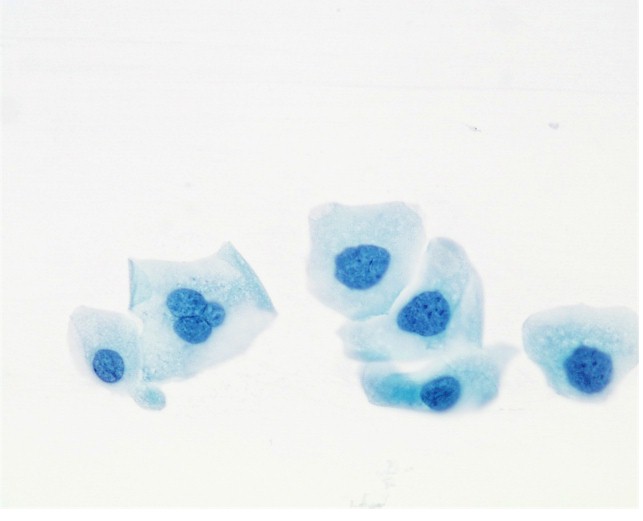|
Moderate Dysplasia |
|
Moderate dysplasia means the skin of the cervix is growing moderately faster than it should and has progressed beyond the mild stage. A biopsy of the cervix shows immature basal cells growing partway through to the surface of the skin, without significant maturation. Moderate dysplasia is important because there is a much greater risk that these changes will advance, if untreated, into invasive cervical cancer. For that reason, moderate dysplasia is known as a "high grade" lesion, or "high grade squamous intra-epithelial lesion" (HGSIL). Another synonym for this condition is "CIN II" (Cervical Intra-epithelial Neoplasia Grade II). Moderate dysplasia on a Pap smear usually indicates that further study of the cervix with colposcopy is needed. If moderate dysplasia is confirmed, then it is usually treated. Treatments might include cryosurgery, LEEP, or laser. Following treatment, frequent Pap smears are usually obtained as follow-up to make sure that if there is a recurrence (about 10% chance), that the recurrence is promptly diagnosed and further treatment performed. |

